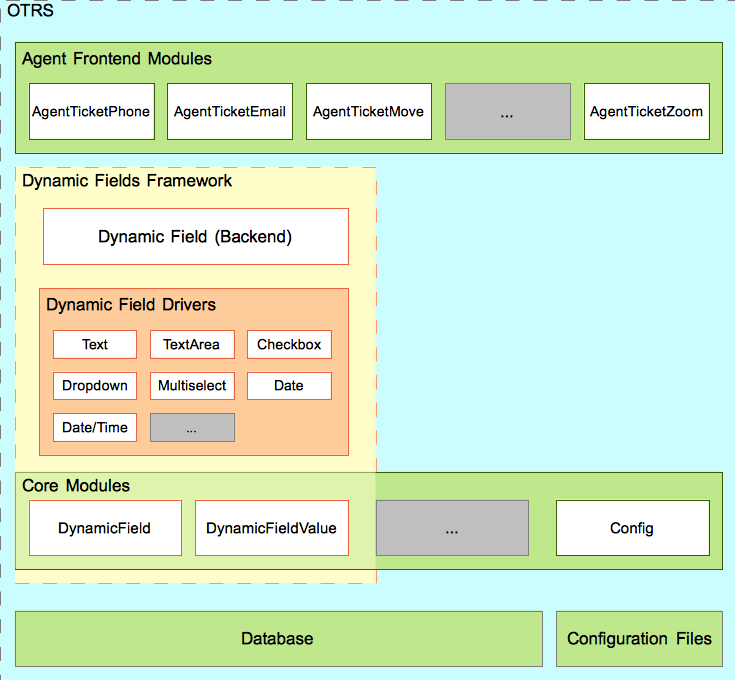Dynamic Field Interaction With Front End Modules¶
Knowing about how front end modules interact with dynamic fields is not strictly necessary to extend dynamic fields for the ticket or article objects, since all the screens that could use the dynamic fields are already prepared. But in case of custom developments or to extend the dynamic fields to other objects is very useful to know how to access dynamic fields framework from a front end module.
The following pictures are showing a simple example of how the dynamic fields interact with other OTOBO framework parts.
Dynamic Field Interaction¶

Dynamic Field Interaction
The first step is, that the front end module reads the configured dynamic fields.
For example AgentTicketNote should read Ticket::Frontend::AgentTicketNote###DynamicField setting. This setting can be used as the filter parameter for DynamicField core module function DynamicFieldListGet(). The screen can store the results of this function, to have the list of the dynamic fields activated for this particular screen.
The screen should try to get the values from the web request subsequently. It can use the back end object function EditFieldValueGet() for this purpose and might use this values to trigger ACLs. The back end object will use each driver, to perform the specific actions for all functions.
Afterwards the screen should get the HTML for each field to display. The back end object function EditFieldRender() can be used to perform this action and the ACLs restrictions. On top of that, the values from the web request can be passed to this function, in order to get better results. In case of a submit, the screen could also use the back end object function EditFieldValueValidate(), to check the mandatory fields.
Note
Other screens could use DisplayFieldRender() instead of EditFieldRender(), if the screen only shows the field value and in such case, no value validation is needed.
To store the value of the dynamic field, it is necessary to get the object ID.
For this example, if the dynamic field is linked to a ticket object, the screen should already have the TicketID, otherwise if the field is linked to an article object, in order to set the value of the field, it is necessary to create the article first. ValueSet() from the back end object can be used to set the dynamic field value.
In summary, the front end modules does not need to know, how each dynamic field works internally, to get or set their values or to display them. It just needs to call the back end object module and use the fields in a generic way.